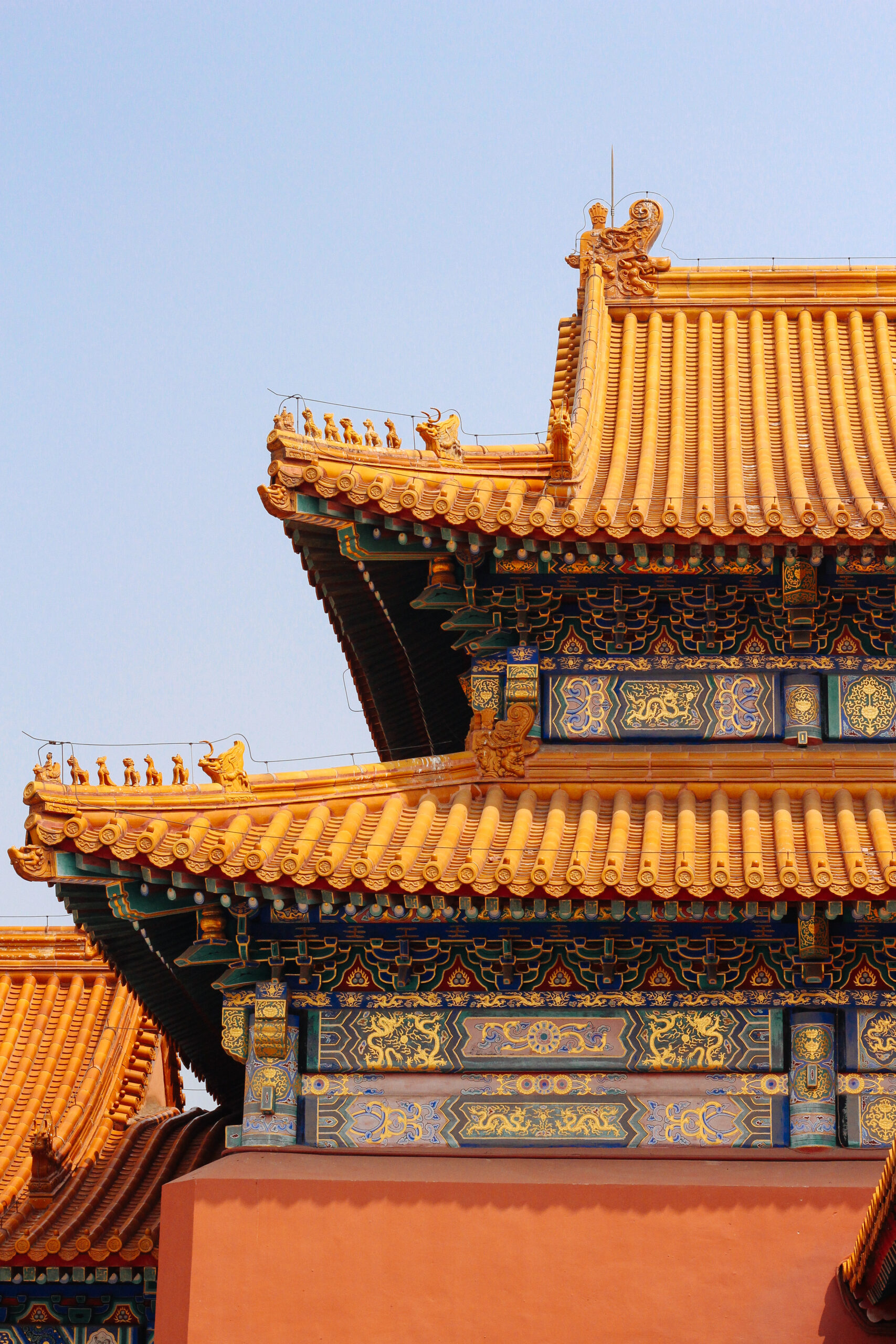
dessert
Top 15 Things to Do in Beijing: From Hot Pot to Hidden Gems
July 19, 2025
Last updated on August 31st, 2025 at 04:30 pm
Okay, so Beijing was definitely nooooot on my travel bingo card. Like… at all. But it’s been my dad’s lifelong dream to go to China together so when I was coincidentally on funemployment for ~2 weeks, I just knew I had to go. And I’m so glad I did! If you’re even remotely curious about visiting, let me just say: there are way more things to do in Beijing than I ever imagined. It’s one of those places where ancient history meets foodie heaven, with a side of “hooooly shit the culture is SO different from the west” type of way.
We spent three full days in Beijing exploring a mix of iconic landmarks and hidden gems (with my amazing native dad as my tour guide). So if you’re planning a trip to the dumpling capital of the East – make sure to keep reading for my amazing guide to the absolute best 15 things to do in Beijing 🇨🇳👇
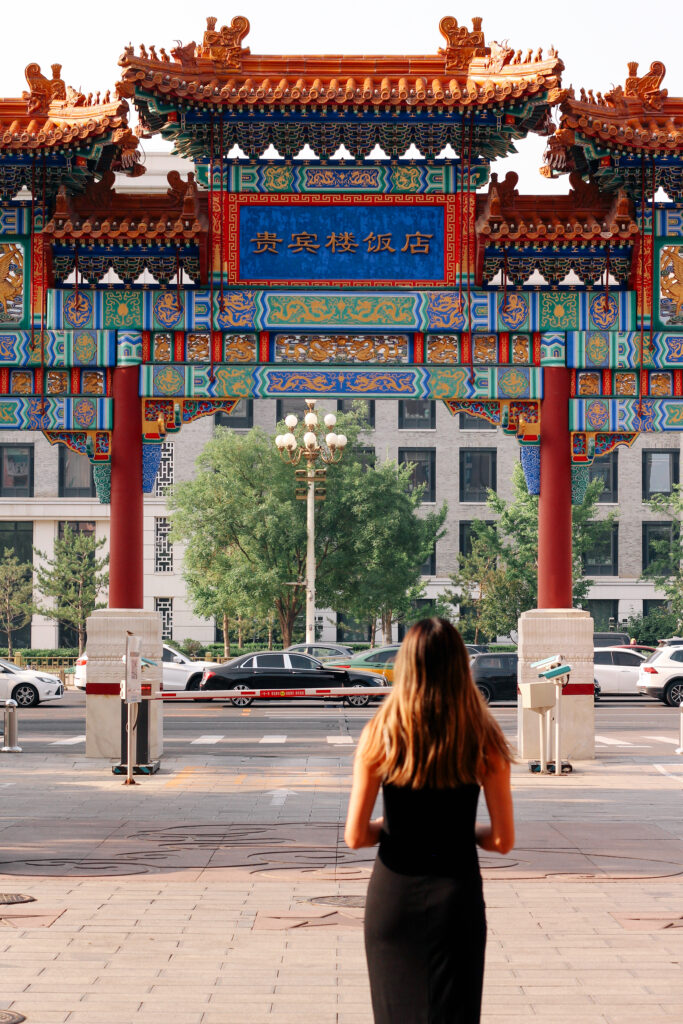
Read more on China 🇨🇳
- A First Timer’s Guide to the Best 3-Day Beijing Itinerary
- Where to Stay in Beijing: Top Neighborhoods for First-Time Visitors
- Empark Prime Hotel Beijing Review: Luxurious Comfort Near the Forbidden City
This site contains affiliate links, which means I may earn a small commission if you make a purchase through them (which will likely go towards overpriced airport wine or buying my dog more unnecessary toys). However, none of that impacts the integrity of my reviews. All thoughts and opinions are my own.
Beijing at a Glance:
Short on time? Here are my top picks for the best boutique hotels in Beijing:
- Empark Prime Hotel Beijing (Dongcheng District) – A well-located and affordable option near the Forbidden City, offering spacious rooms and a solid breakfast buffet, ideal for travelers who want comfort and convenience without the luxury price tag.
- Sofitel Beijing Central (Chaoyang District) – A modern and stylish hotel blending French elegance with Chinese flair, offering comfortable rooms and great amenities for both business and leisure travelers exploring Beijing.
- Four Seasons Beijing (Chaoyang District) – A refined luxury hotel with top-tier service, elegant interiors, and a stunning spa, perfect for travelers seeking a peaceful, upscale escape with easy access to Beijing’s business and shopping hubs.
Curious about where we stayed? Check out my detailed Empark Prime Hotel review here.
#1. Try Luosifen (famous rice noodles) at Liuzhou Fat Auntie’s Snail Rice Noodles Restaurant
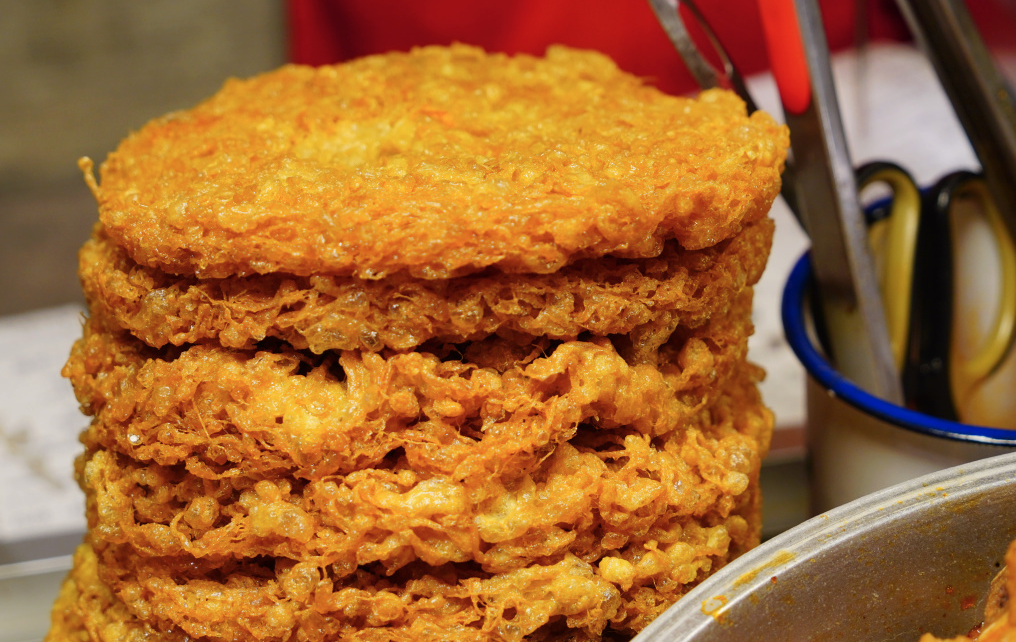
Don’t these noodles kind of look like ramen? Well, they’re not! They’re called “Luosifen” or (螺蛳粉) in Mandarin and they are a Beijing staple. Luosifen, also known as “snail rice noodles,” is a bold and beloved dish that hails from Liuzhou in Guangxi province. The broth is made from river snails, simmered with pork bones, fermented bamboo shoots, and a variety of spices to create a rich, sour, and spicy base that’s unlike anything else.
It’s typically served with rice noodles, pickled vegetables, tofu skin, peanuts, and chili oil, offering a super flavorful mix of textures in every bite. Don’t worry, the dish rarely contains actual snails (just their essence). And if you’re a girl, you shouldn’t be afraid since we already put snail essence all over our face with our beauty products!
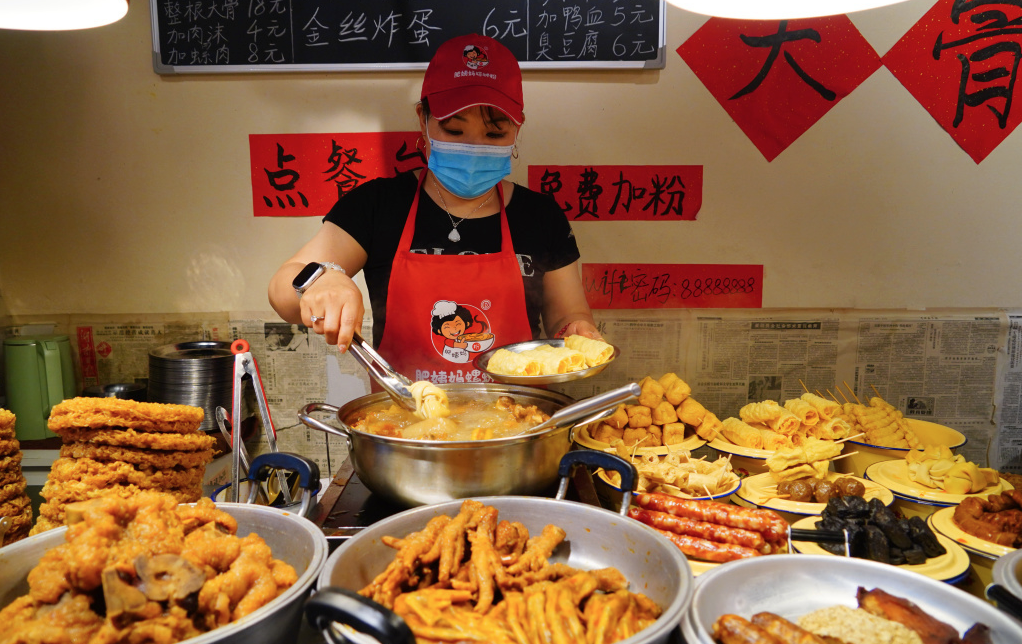
One of the most underrated things to do in Beijing is trying a bowl of Luosifen, and the best spot to get it is from “Liuzhou Fat Auntie’s Snail Rice Noodles” aka 柳州肥姨妈大骨螺蛳粉. They’re super popular with the locals and the price is freakin unbeatable. You can get a massive bowl of these noodles for under $3 USD. We were also surrounded by locals so you know it’s gooooood. Just a headsup, there’s no English menu (like much of China) but just ask for a traditional Luosifen (传统螺蛳粉) and you’ll be fine!
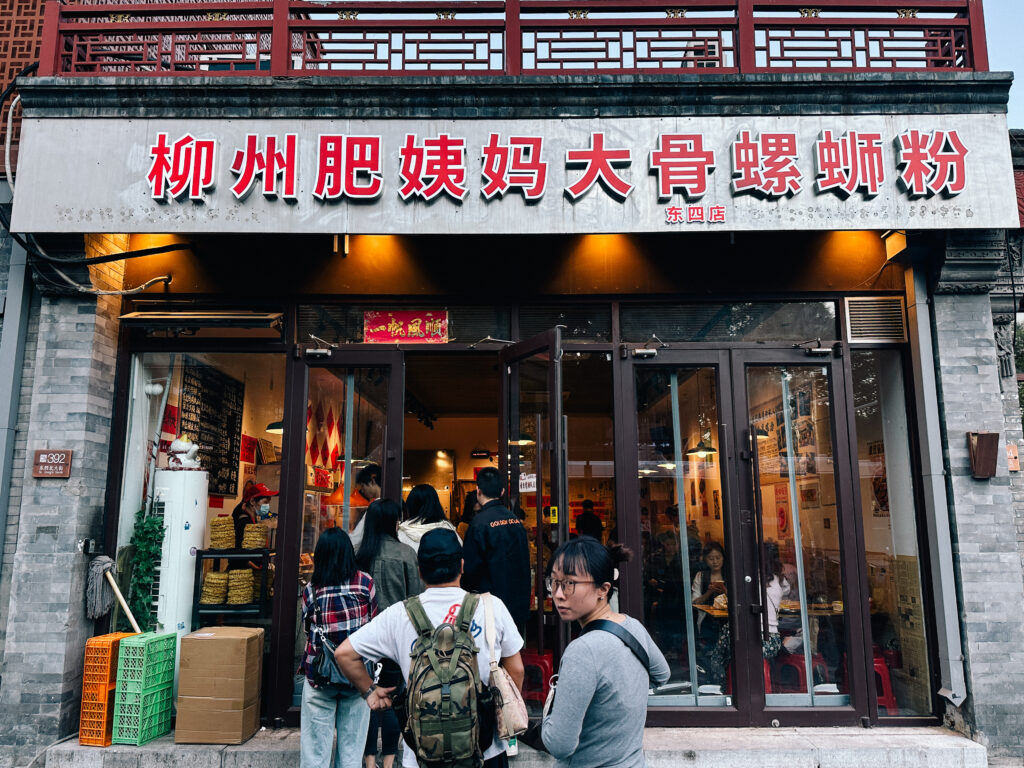
Definitely one of the more adventurous and fun things to do in Beijing if you’re into food that makes an unforgettable impression.
Keep in mind these noodles aren’t for the faint of nose, but for those willing to try anything once 🙋🏻♀️ Luosifen is a must-try Beijing activity that’ll “stick” with you…literally and figuratively 🐌
Restaurant Name in Simplified Chinese: 柳州肥姨妈大骨螺蛳粉
Address in Simplified Chinese: 北京市大成路25号1层1-2商铺
📍Baidu Maps Link (since Google doesn’t work in China)
#2. Climb Jingshan Park for Epic Views (WITHOUT the crowds)

If it’s your first time to the Peking capital, taking a trip to the Forbidden City is probably on your list of things to do in Beijing. Which is great because there’s a ton of history there and it’s one of the top-rated Beijing activities. BUUUTTTT did you know there’s a lesser known park across the street where you can get 360° views of Beijing AND the Forbidden City?
Jingshan Park (景山公园) is a peaceful hilltop park located right across from the north exit of the Forbidden City, and I swear it’s still one of the best-kept secrets for getting a panoramic view of Beijing.
The hill itself is man-made (using soil dug out during the construction of the Imperial Palace) and was designed as a feng shui protector for the city. At the summit, you’ll find Wanchun Pavilion, where you can get some incredible (and unobstructed) photos of the Forbidden City’s rooftops, the Drum and Bell Towers, and even the distant skyline. It’s a favorite among locals for morning tai chi and sunset strolls, and the best part?
THE ENTRANCE FEE IS $1 USD 🤯
And you get allllllll the epic views without elbowing through tour bus crowds. This is definitely a must-do activity in Beijing for history lovers, amateur photographers, and first-time visitors.
#3. Eat Your Way Through Beijing’s Historic Hutongs
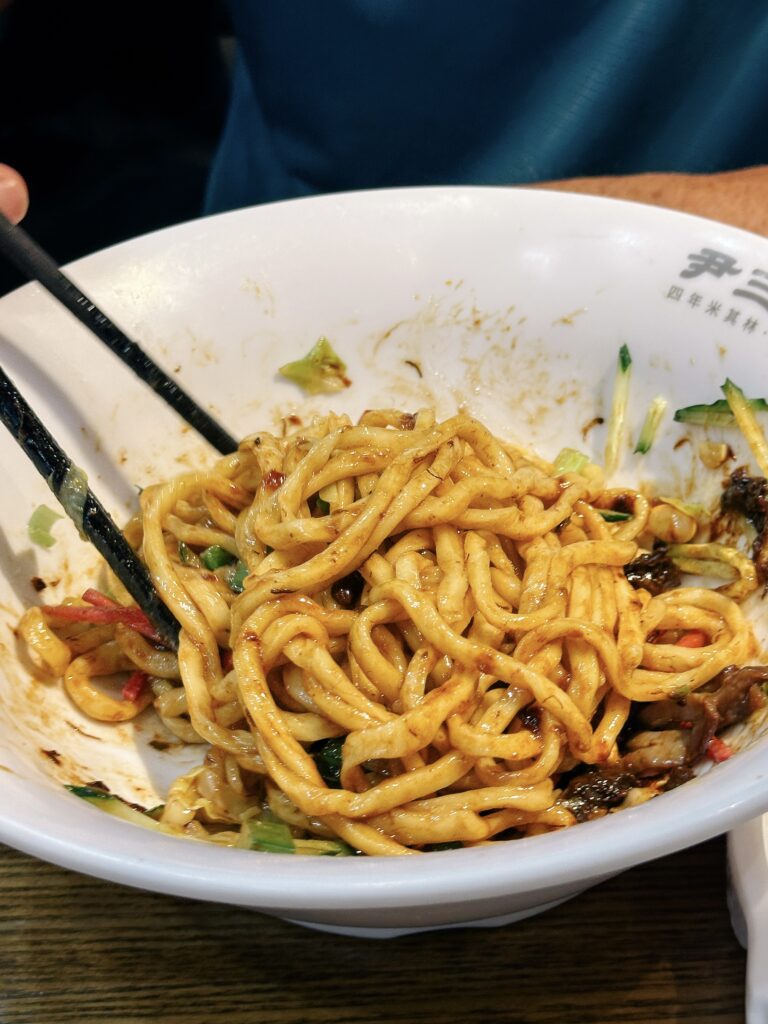
What better way to experience Beijing (or any place for that matter) than through its food? And yes, I’m talking about a delicious small group food tour where you get to taste your way through history at each stop. This small-group (my fav) Beijing Hutong food tour takes you deep into old Beijing’s alleyways, where you’ll sample everything from hand-pulled noodles to spring pancakes to a sizzling hot pot inside a 100-year-old courtyard home.
Each bite comes with a side of history and local flavor, literally. You’ll finish the night with a local craft beer at a hidden brewery while swapping stories with your new food tour friends. I loooove joining food tours when I travel and this authentic Hutong tour is definitely one of the tastiest things to do in Beijing 🥟
#4. Cool Off with a Landmark-Shaped Ice Cream

Lols this is where I’m going to admit that I sometimes love the touristy shit. Like buying (and eating) a popsicle in the shape of the Forbidden City? I mean come on – how cute??? And yes, makes for a great Instagram post. You can find these at almost any famous landmark while checking off your list of things to do in Beijing.
And yes, it will cost you about $5 USD for one but hey, thats still a steal to me.
So grab one and enjoy being a tourist for a minute.
#5. Visit Lama Temple and Shop Along Yonghegong Street
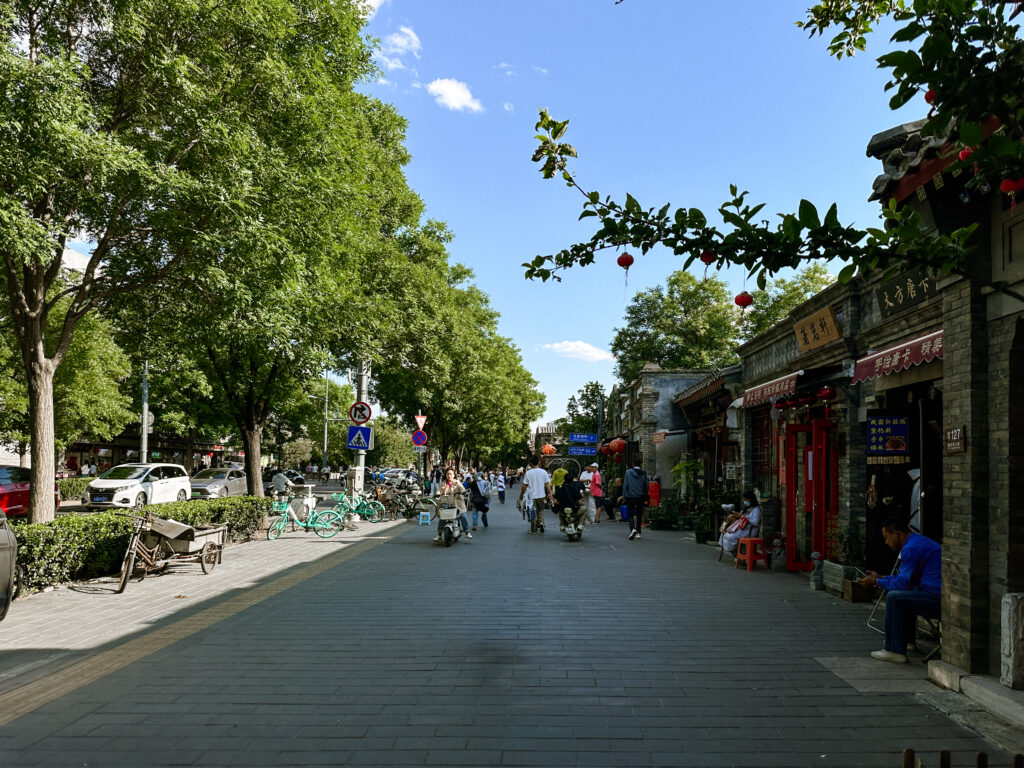
Lama Temple is probably one of the most peaceful spots in Beijing 🧘🏻♀️
Also known as Yonghe Temple, Lama Temple is one of the most beautiful and best-preserved Tibetan Buddhist temples outside of Tibet. Think swirling incense, golden Buddha statues, and stunning Tibetan architecture.
Even if temples aren’t your thing (I get it, they can get boring after awhile) — I’d still recommend wandering down Yonghegong Street right outside. It’s a long stretch full of little surprises featuring hidden alleyways, cozy coffee shops tucked behind unmarked doors, and souvenir shops stocked with everything from prayer beads to incense and quirky vintage finds.
It’s one of those fun things to do in Beijing that doesn’t require a ticket or a plan. Locals hang out here too, playing Chinese chess, lounging on benches, or chatting with friends. So it’s a great spot to rest your legs and do a little people watching. My dad and I really enjoyed walking this entire street back to our hotel.
#6. Dip into a Classic Beijing Hot Pot Experience
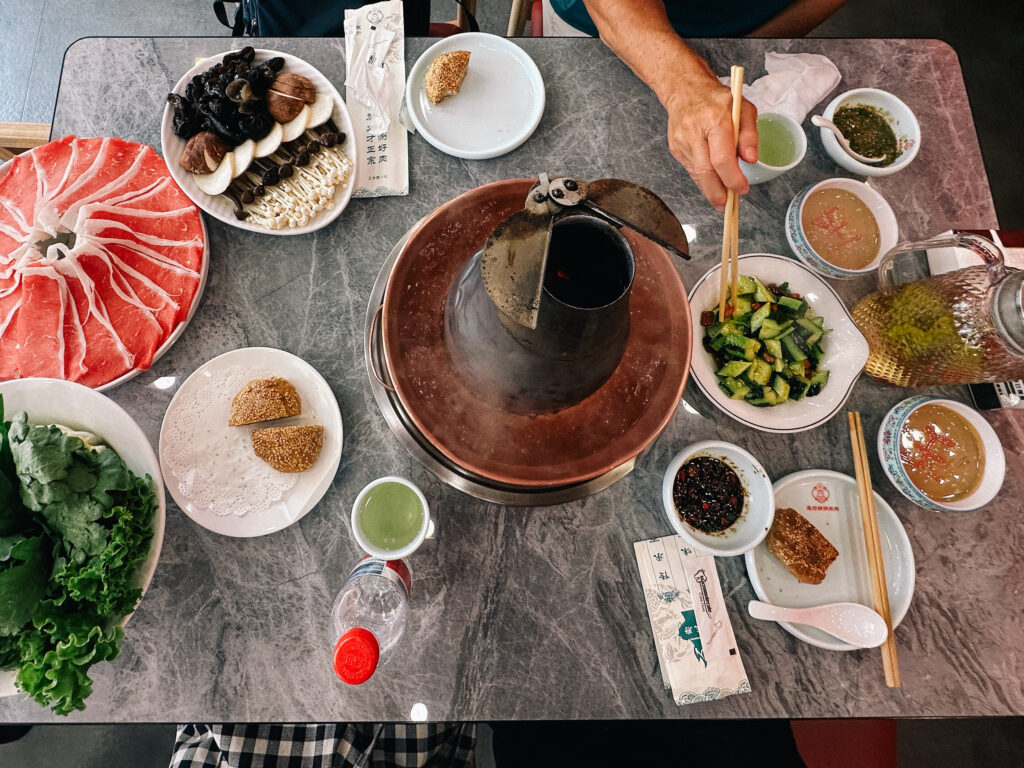
If you’re from a major metropolitan city (like I am), you might already be familiar with the concept of “hot pot”. Which is exactly what it sounds like. One. Big. Hot. Pot.
But Beijing does it soooooo different!
Beijing-style hot pot, often referred to as málàtàng or shuàn yáng ròu when lamb is involved, is all about simplicity and tradition. The star of the show is the iconic tall steel copper pot with a chimney in the center, traditionally heated by charcoal. Unlike spicy Sichuan hot pot that hits you with numbing heat, Beijing hot pot is typically made with a mild, clear broth (usually a base of water, goji berries, Chinese dates, and scallions). All designed to highlight the flavor of the ingredients rather than overpower them.
What sets it apart? It’s all about the thinly sliced mutton, shaved almost paper-thin, and quickly swished in the bubbling broth. Be careful not to accidentally let it touch the chimney part otherwise the meat just immediately sticks to it. We didn’t know that and unfortunately lost 2 good pieces of meat haha. Not the end of the world but just not something that you think about or come across in a more traditional hot pot setting.
My dad and I personally ate Beijing hot pot at Jing Men Jiu Shuan restaurant (前门杨记涮肉王府井店) and it was really great! It’s super close to Wangfujing Street so you can even go shopping right after to burn off all the 🥩
Restaurant Name: Jing Men Jiu Shuan 前门杨记涮肉(王府井店)
Address: 大甜水井胡同38号
📍Baidu Maps Location
📍Google Maps Location
#7. Take Home a Collectible Gold Coin from the Great Wall
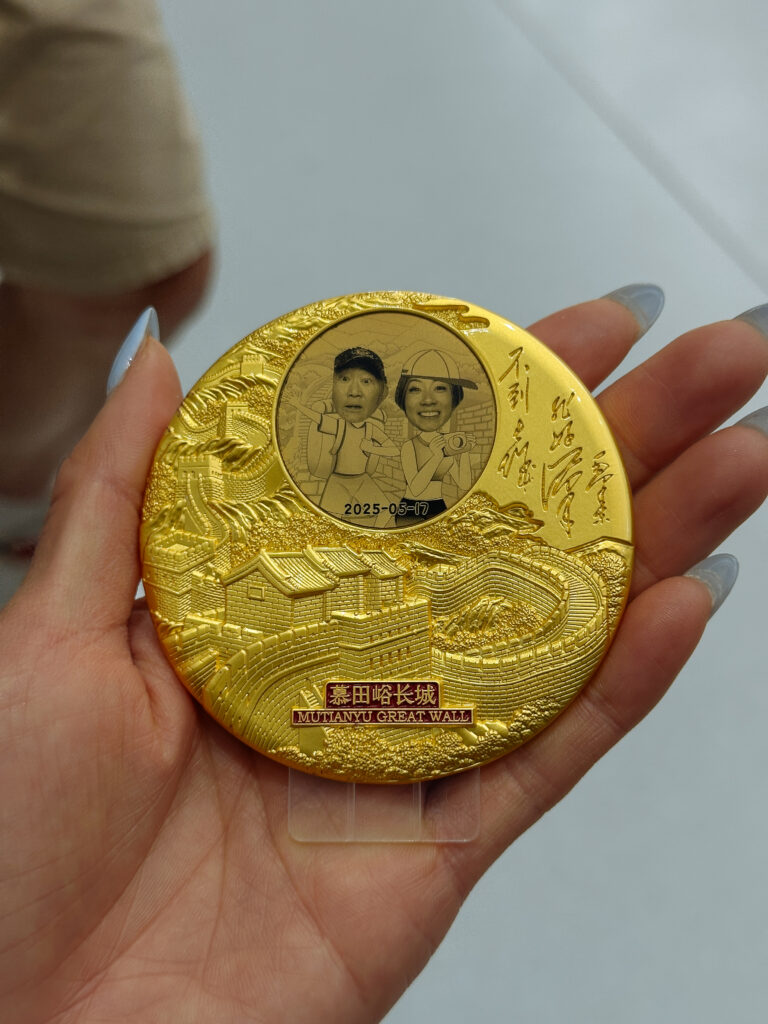
I debated even putting the great wall on this list of top 15 things to do in Beijing but I kinda felt like I had to. Not only because it’s THE #1 thing to do for first-time visitors to Beijing but I was actually beyoooond impressed once I got there. Like, I know it’s one of the seven wonders for a reason but it’s hard to truly capture the size and scale of this thing until you visit. (Like when I went to the Pyramids of Giza, my jaw was to the fucking floor).
You can read all about my epic adventure to Egypt here!
The best part about visiting the Great Wall is that it’s SUPER easy to get to from Beijing. My dad and I were debating between hiring a private driver (more flexibility/freedom) or joining a group tour. We ultimately decided to join a shared tour because my dad really enjoys chit-chatting with strangers AND it was so cost-effective.
This is probably the cheapest tour ticket I’ve ever purchased and one of the most efficiently run. We booked this exact half-day tour to the Mutianyu section of the Great Wall for $12/person. The bus left from a central spot in Beijing at 8am and we got back aroun ~4pm.
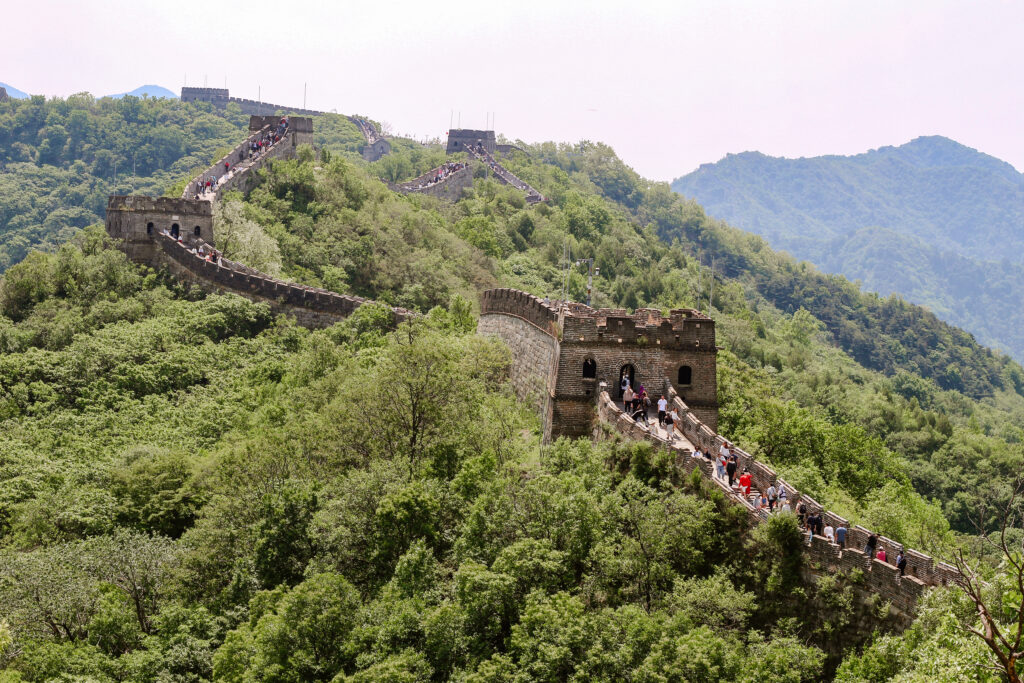
Just so you know, the Great Wall spans thousands of miles, but only a handful of sections are easily accessible from Beijing. Badaling is the most popular and well-restored (aka: also the most crowded with domestic tourists). Mutianyu offers a scenic, less-touristy alternative with a cable car and toboggan ride. Jinshanling is a favorite for hikers, with a mix of restored and wild wall sections and sweeping mountain views. And if you’re up for a rugged adventure, Jiankou is steep, unrestored, and stunning (but definitely not for the faint of heart).
We chose Mutianyu and loved it. Everyone takes a bus up to the starting point and from there, you can choose to either take a gondola up to the top and/or hike up to the top. And then there’s multiple sections of the wall you can walk on! All in all it was a great day and super well-organized! You know me, I love nothing more than a logistically easy stress-free travel day!
#8. Marvel at the Jade Carvings inside Beijing Hotel
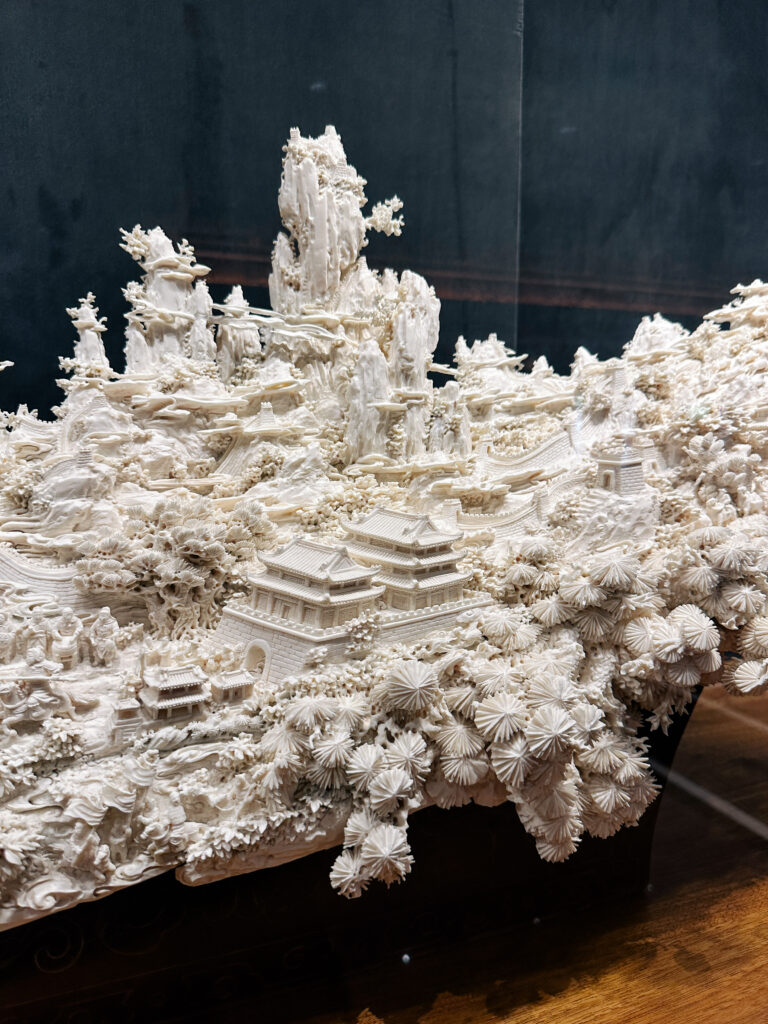
Tucked inside the elegant Beijing Hotel is one of the coolest art displays you probably haven’t heard of… but they have these two massive jade carvings that look like they took several lifetimes to create. The level of detail is insane, and it’s all carved from a single piece of jade. Even if you’re not a “museum person,” this one’s quick and jaw-droppingly beautiful. Plus, it’s free and air-conditioned.
#9. Fuel Up with an International Buffet Breakfast
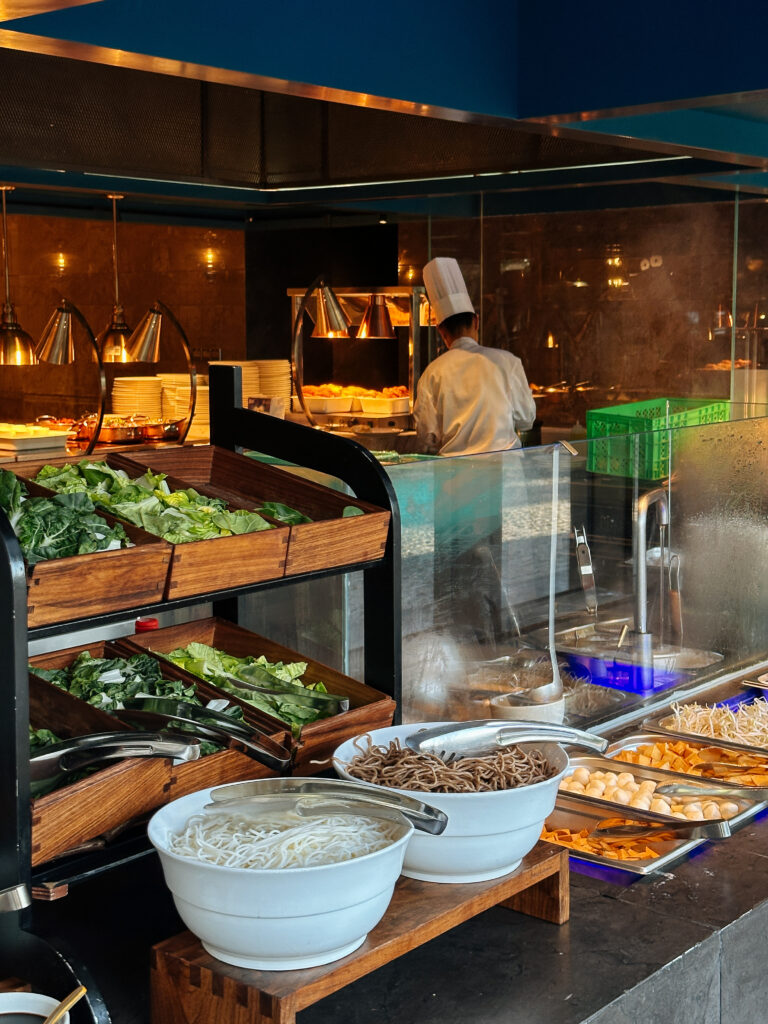
If you’re staying at a nice hotel or just a hotel that offers a breakfast buffet, make sure you don’t sleep on it. China is having a moment with its luxury hotels right now, where you can book 5-star properties for less than $200 USD/night. (Four Seasons, St Regis, etc).
We stayed at Empark Prime Hotel Beijing and they had one of the best breakfast buffets ever! I’m talking dim sum, congee, croissants, cheese boards, and even champagne! It’s the perfect way to fuel up before tackling all the things to do in Beijing.
Trust me, a solid hotel buffet is one of those surprisingly fun things to do in Beijing that sets the tone for an amazing day.
Check out my full review of Empark Prime Hotel Beijing here!
#10. Spend a Day in Beijing’s Gubei Water Town
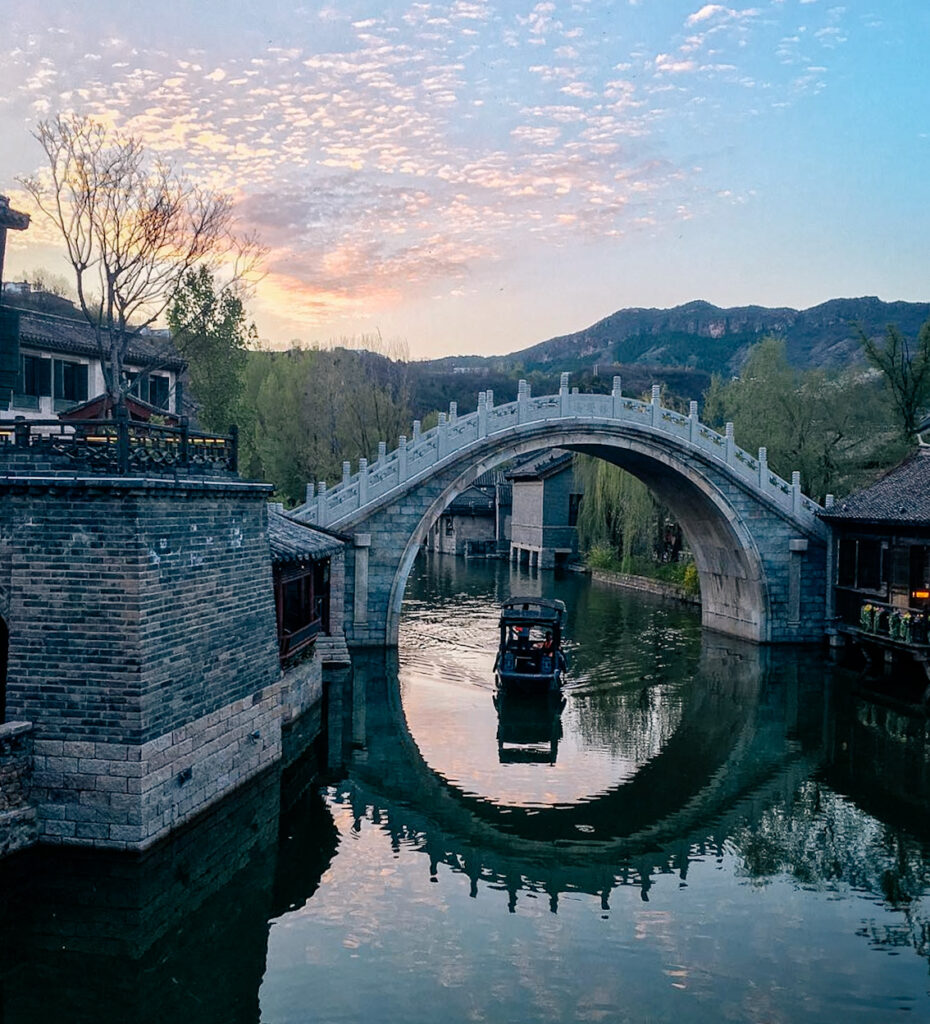
I can’t stress enough hooow eye-opening this trip to China was for me. I obviously knew the country was big, but never thought in a million years it’d have places as beautiful as Gubei or Jinshanling. If you have the time, I highly recommend taking a day trip to a few areas outside of Beijing.
Gubei Water Town is a super photogenic little village just a few hours outside of Beijing, designed to look like an ancient Chinese water town — complete with stone bridges, lantern-lit canals, and mountain views in the distance. It’s built at the base of the Simatai section of the Great Wall, so you could actually hit up both in one if you didn’t want to visit the Mutianyu section I recommended earlier.
The town itself is really beautiful, especially at night where the lights reflect off the water. This was the exact day trip we took and we loved exploring all of the little tea houses, lanterns, souvenir shops, craft markets, and more. 10/10 recommend going in the late afternoon/evening so that you’re catching the sunset from the Great Wall. Seriously a once in a lifetime experience.
This incredible day trip to Gubei Water Town and Jinshanling is suuuch a peaceful break from the buzz of Beijing and absolutely worth adding to your things to do in Beijing list. If you’re looking for more relaxed but still stunningly scenic fun things to do in Beijing, this one’s it 🏮
#11. Taste Michelin-Starred Tripe in Qianmen
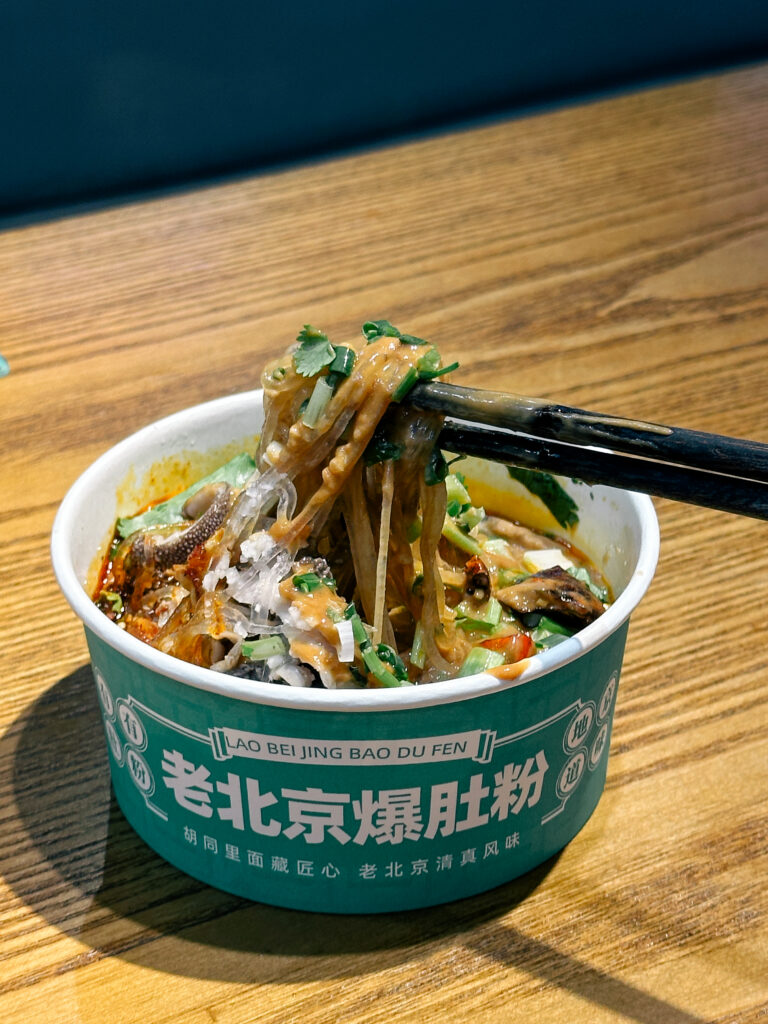
You’re in Asia. Which means trying food that you normally wouldn’t encounter in the west. And yes I’m talking about tripe and noodles but mostly the tripe. Yin San Douzhi (尹三豆汁) is a Michelin Bib Gourmand restaurant that serves delicious niu baiye (beef tripe) and zhajiangmian (炸酱面).
Their tripe dish, served cold, features thinly sliced beef tripe tossed in chili oil, garlic, and vinegar for a chewy, spicy, and surprisingly refreshing bite. As for zhajiangmian — this is the noodle dish of Beijing.
You’ll get thick wheat noodles on the bottom, then a pile of toppings like shredded cucumber, radish, bean sprouts, and a rich soybean paste sauce (sometimes with minced pork) on top. No sauce is mixed in yet, so it’s up to you to stir it all together and get that perfect bite.
It’s hearty, flavorful, and totally comforting. (Back in SF, I probably Doordash these noodles once a week if I’m being honest). But nothing compares to the flavor in actual China.
Name: Yin San Douzhi (尹三豆汁)
Address: 东城区东晓市街176号
📍Baidu Maps Address
📍Google Maps Address (would verify this with a local just to make sure)
#12. Explore the Forbidden City on Foot
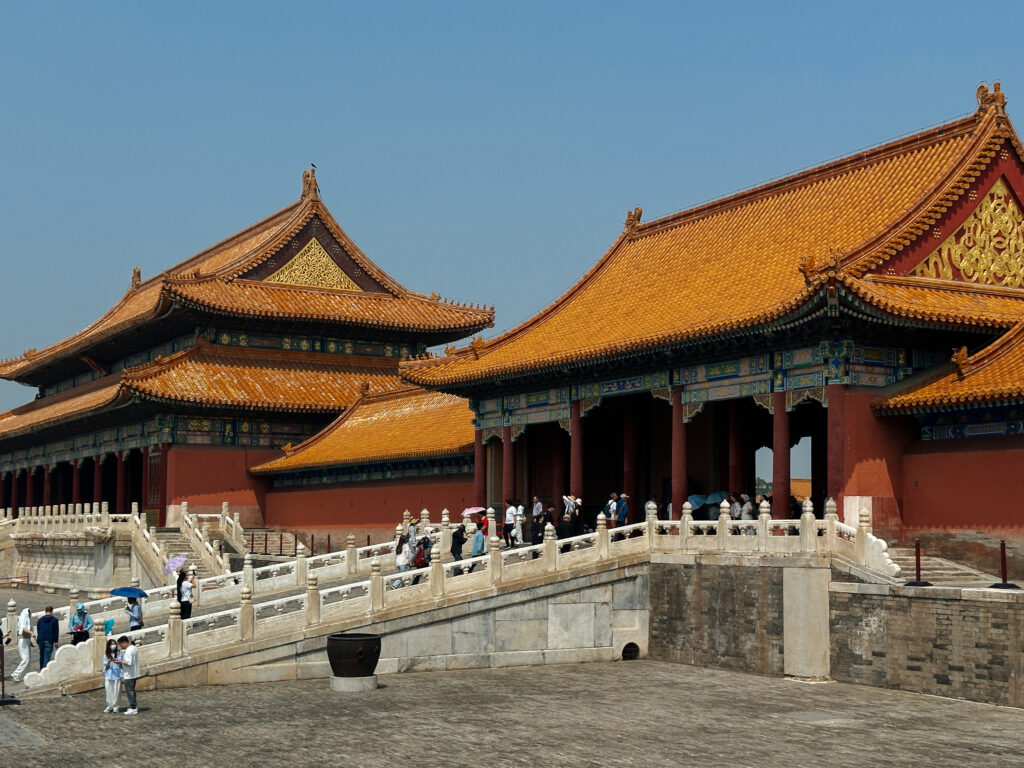
I told you this was going to be a mix of hidden gems and tourist hotspots which means you can’t go to Beijing and not visit the Forbidden City. Once home to emperors and countless secrets, this massive complex is filled with courtyards, red walls, and golden roofs that go on forever. It’s one of the top-rated things to do in Beijing for a reason.
Just make sure to wear comfortable shoes and plan to spend at least 2–3 hours here.
My dad and I booked a group tour in English and felt like it was great value for money. It was well-organized, educational, and a great way to knock out the top-rated attraction in Beijing. I’m pretty sure we paid around $18/person via GetYourGuide.
#13. Savor Beijing’s Most Iconic Dish – Peking Duck
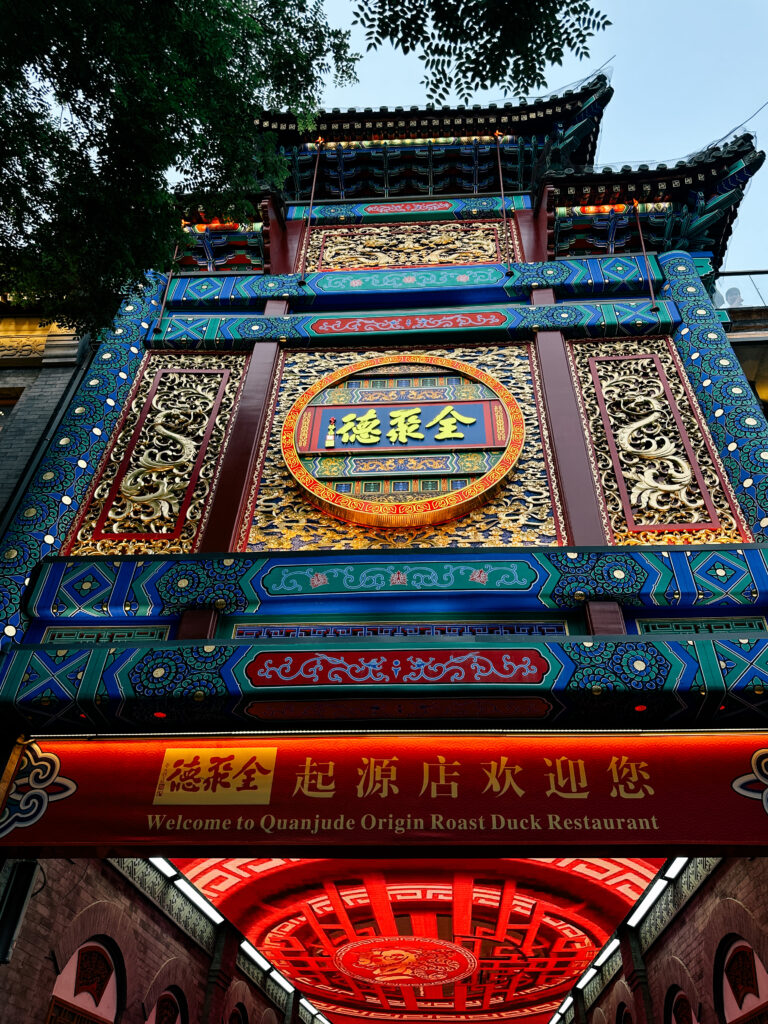
Peking Duck in Beijing isn’t just dinner, but a performance which is what makes it an absolute must-try while you’re in town. It’s known for its impossibly crispy skin, juicy meat, and the whole table-side slicing ritual that makes you feel like royalty.
The classic way to eat it? Wrap the duck in a thin pancake with hoisin sauce, scallions, and cucumber. Some restaurants even serve the duck in three courses: skin first, then meat, then a soup made from the bones (I’m not a fan of that but whatever floats your boat).
Some of the best restaurants in Beijing for Peking Duck include Da Dong restaurant, Quanjude Roast Duck, and Peking Chamber. Quanjude has been around for awhile and from what I hear, has really lost its shine but I’ll let you be the judge of that!
Keep in mind, all of these restaurants get super busy though so I highly recommend popping by Peking Chamber to put your name down, walk around Qianmen, and then head back!
#14 Sample Flavorful Fruit Wine called “Hua jiu”
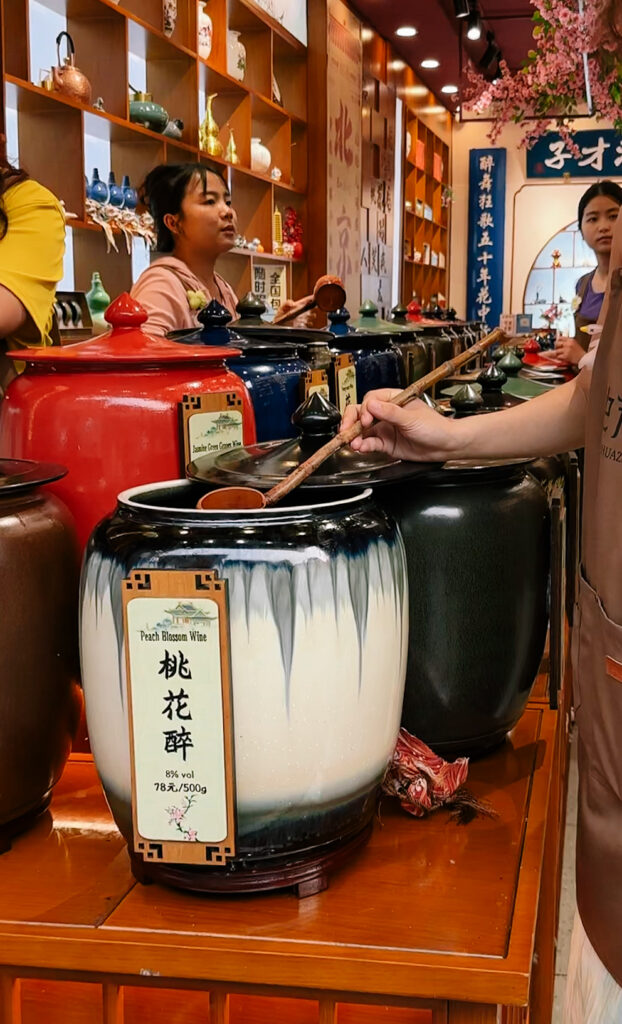
Hua jiu, or “flower wine,” is a traditional Chinese alcoholic beverage made by infusing rice wine with edible flowers or fruits such as osmanthus, chrysanthemum, plum, or lychee. The result is a lightly sweet, aromatic drink with a lower alcohol content than baijiu, making it approachable even for casual drinkers.
Locals often drink it warm, especially in cooler months, and it pairs beautifully with rich or spicy dishes. If you’re looking for something more delicate than baijiu and more interesting than beer, hua jiu is a fun, cultural alternative to try!
They sell this wine in most of the small shops or local markets where you can taste a sample before committing. We visited a place in Qianmen that had a bunch of different fruit and tea flavored wines as well. Like this peach blossom wine. It was soooooo freakin good. I wish I could’ve brought some home but they were basically only selling it in clay pots and I was too scared of one breaking in my luggage.
My dad and I bought a few little bottles though and drank them together at dinner one night though so we still got to sip on some of this delicious 8% wine.
#15. Shop Til you Drop Wangfujing’s Pedestrian Street
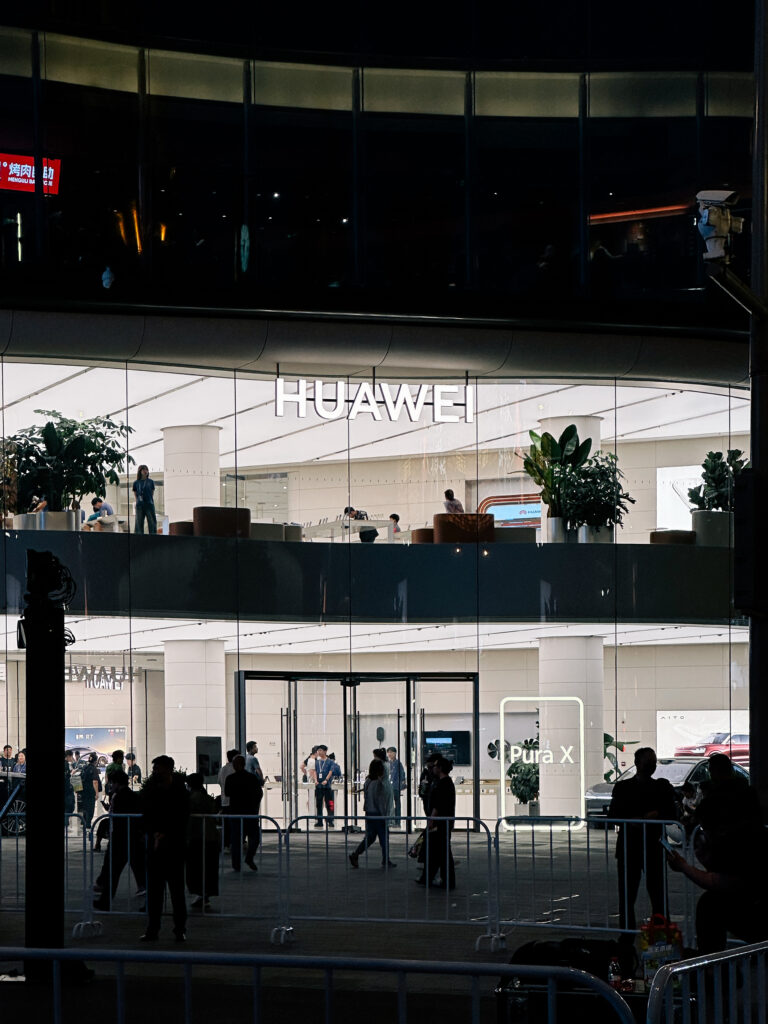
Wangfujing Pedestrian Street is kinda like the Times Square of Beijing. Except with a lot more Chinese brands and street performances. Like, so many people dancing and singing in the streets it was a total vibe at night.
I’d only recommend stopping by if you’re in the mood to browse department stores, try some quirky street snacks, or grab a few last-minute souvenirs. Beyond that, there’s not a ton to do, but it still earns a spot on the fun things to do in Beijing list if you’re up for some light exploring.
And since the whole area is pedestrian-only, it’s a solid place for an evening stroll to walk off all that Peking duck and hot pot.
Add it to your list of things to do in Beijing if you’re nearby and want a low-effort wander 🛍️
Top 15 Things to Do in Beijing: Final Thoughts
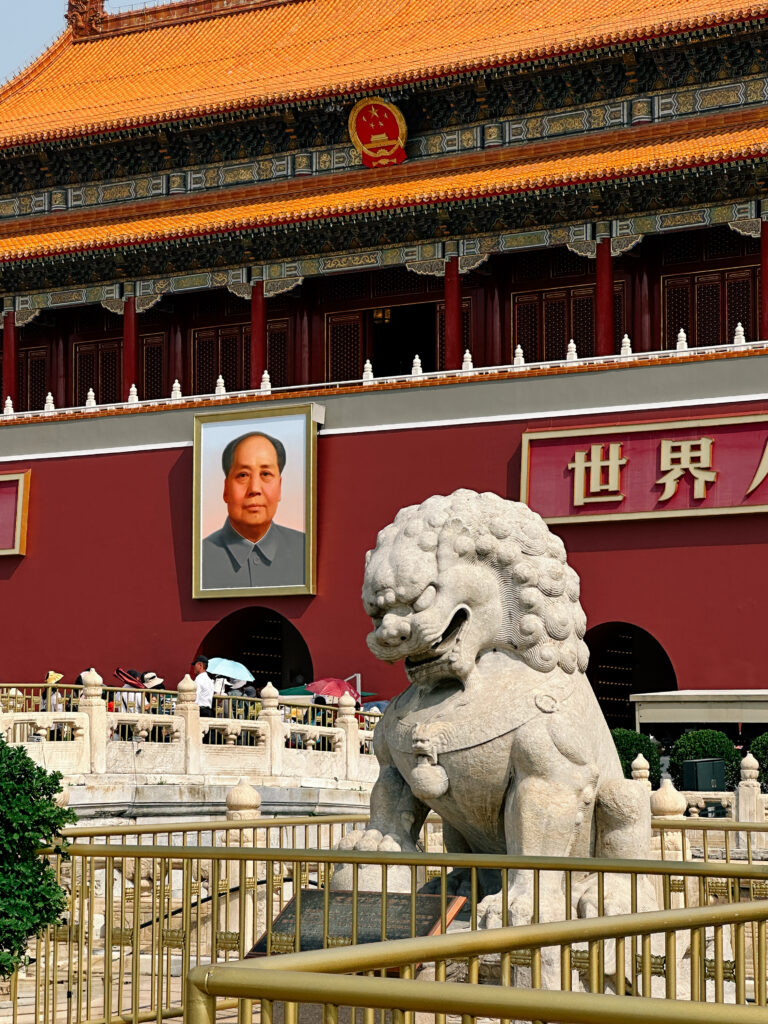
Beijing might not have been on your bingo card either, but once you’re there (or here)…it’s pretty cool isn’t it?
Between the ancient wonders, delicious food, and everyday surprises — Beijing really delivers a good mix of history and chaos in the best possible way. Whether you’re here for three days or a full week, there’s no shortage of unforgettable things to do in Beijing to pack into your trip.
From tourist must-sees to off-the-beaten-path gems, you’ll find plenty of fun things to do in Beijing around every corner. So bring comfy shoes, an open mind, and a big appetite because you’re gonna need all three.
Did you get to check off any of these top 15 things to do in Beijing? Let me know in the comments below!
Visiting other places in China?
Check out my other travel guides on China here.
Visiting other parts of Asia?
Check out my other travel guides on Asia here.
Looking for travel inspiration to somewhere else?
July 19, 2025
Last updated on August 31st, 2025 at 04:30 pm
Okay, so Beijing was definitely nooooot on my travel bingo card. Like… at all. But it’s been my dad’s lifelong dream to go to China together so when I was coincidentally on funemployment for ~2 weeks, I just knew I had to go. And I’m so glad I did! If you’re even remotely curious about visiting, let me just say: there are way more things to do in Beijing than I ever imagined. It’s one of those places where ancient history meets foodie heaven, with a side of “hooooly shit the culture is SO different from the west” type of way.
We spent three full days in Beijing exploring a mix of iconic landmarks and hidden gems (with my amazing native dad as my tour guide). So if you’re planning a trip to the dumpling capital of the East – make sure to keep reading for my amazing guide to the absolute best 15 things to do in Beijing 🇨🇳👇

Read more on China 🇨🇳
- A First Timer’s Guide to the Best 3-Day Beijing Itinerary
- Where to Stay in Beijing: Top Neighborhoods for First-Time Visitors
- Empark Prime Hotel Beijing Review: Luxurious Comfort Near the Forbidden City
This site contains affiliate links, which means I may earn a small commission if you make a purchase through them (which will likely go towards overpriced airport wine or buying my dog more unnecessary toys). However, none of that impacts the integrity of my reviews. All thoughts and opinions are my own.
Beijing at a Glance:
Short on time? Here are my top picks for the best boutique hotels in Beijing:
- Empark Prime Hotel Beijing (Dongcheng District) – A well-located and affordable option near the Forbidden City, offering spacious rooms and a solid breakfast buffet, ideal for travelers who want comfort and convenience without the luxury price tag.
- Sofitel Beijing Central (Chaoyang District) – A modern and stylish hotel blending French elegance with Chinese flair, offering comfortable rooms and great amenities for both business and leisure travelers exploring Beijing.
- Four Seasons Beijing (Chaoyang District) – A refined luxury hotel with top-tier service, elegant interiors, and a stunning spa, perfect for travelers seeking a peaceful, upscale escape with easy access to Beijing’s business and shopping hubs.
Curious about where we stayed? Check out my detailed Empark Prime Hotel review here.
#1. Try Luosifen (famous rice noodles) at Liuzhou Fat Auntie’s Snail Rice Noodles Restaurant

Don’t these noodles kind of look like ramen? Well, they’re not! They’re called “Luosifen” or (螺蛳粉) in Mandarin and they are a Beijing staple. Luosifen, also known as “snail rice noodles,” is a bold and beloved dish that hails from Liuzhou in Guangxi province. The broth is made from river snails, simmered with pork bones, fermented bamboo shoots, and a variety of spices to create a rich, sour, and spicy base that’s unlike anything else.
It’s typically served with rice noodles, pickled vegetables, tofu skin, peanuts, and chili oil, offering a super flavorful mix of textures in every bite. Don’t worry, the dish rarely contains actual snails (just their essence). And if you’re a girl, you shouldn’t be afraid since we already put snail essence all over our face with our beauty products!

One of the most underrated things to do in Beijing is trying a bowl of Luosifen, and the best spot to get it is from “Liuzhou Fat Auntie’s Snail Rice Noodles” aka 柳州肥姨妈大骨螺蛳粉. They’re super popular with the locals and the price is freakin unbeatable. You can get a massive bowl of these noodles for under $3 USD. We were also surrounded by locals so you know it’s gooooood. Just a headsup, there’s no English menu (like much of China) but just ask for a traditional Luosifen (传统螺蛳粉) and you’ll be fine!

Definitely one of the more adventurous and fun things to do in Beijing if you’re into food that makes an unforgettable impression.
Keep in mind these noodles aren’t for the faint of nose, but for those willing to try anything once 🙋🏻♀️ Luosifen is a must-try Beijing activity that’ll “stick” with you…literally and figuratively 🐌
Restaurant Name in Simplified Chinese: 柳州肥姨妈大骨螺蛳粉
Address in Simplified Chinese: 北京市大成路25号1层1-2商铺
📍Baidu Maps Link (since Google doesn’t work in China)
#2. Climb Jingshan Park for Epic Views (WITHOUT the crowds)

If it’s your first time to the Peking capital, taking a trip to the Forbidden City is probably on your list of things to do in Beijing. Which is great because there’s a ton of history there and it’s one of the top-rated Beijing activities. BUUUTTTT did you know there’s a lesser known park across the street where you can get 360° views of Beijing AND the Forbidden City?
Jingshan Park (景山公园) is a peaceful hilltop park located right across from the north exit of the Forbidden City, and I swear it’s still one of the best-kept secrets for getting a panoramic view of Beijing.
The hill itself is man-made (using soil dug out during the construction of the Imperial Palace) and was designed as a feng shui protector for the city. At the summit, you’ll find Wanchun Pavilion, where you can get some incredible (and unobstructed) photos of the Forbidden City’s rooftops, the Drum and Bell Towers, and even the distant skyline. It’s a favorite among locals for morning tai chi and sunset strolls, and the best part?
THE ENTRANCE FEE IS $1 USD 🤯
And you get allllllll the epic views without elbowing through tour bus crowds. This is definitely a must-do activity in Beijing for history lovers, amateur photographers, and first-time visitors.
#3. Eat Your Way Through Beijing’s Historic Hutongs

What better way to experience Beijing (or any place for that matter) than through its food? And yes, I’m talking about a delicious small group food tour where you get to taste your way through history at each stop. This small-group (my fav) Beijing Hutong food tour takes you deep into old Beijing’s alleyways, where you’ll sample everything from hand-pulled noodles to spring pancakes to a sizzling hot pot inside a 100-year-old courtyard home.
Each bite comes with a side of history and local flavor, literally. You’ll finish the night with a local craft beer at a hidden brewery while swapping stories with your new food tour friends. I loooove joining food tours when I travel and this authentic Hutong tour is definitely one of the tastiest things to do in Beijing 🥟
#4. Cool Off with a Landmark-Shaped Ice Cream

Lols this is where I’m going to admit that I sometimes love the touristy shit. Like buying (and eating) a popsicle in the shape of the Forbidden City? I mean come on – how cute??? And yes, makes for a great Instagram post. You can find these at almost any famous landmark while checking off your list of things to do in Beijing.
And yes, it will cost you about $5 USD for one but hey, thats still a steal to me.
So grab one and enjoy being a tourist for a minute.
#5. Visit Lama Temple and Shop Along Yonghegong Street

Lama Temple is probably one of the most peaceful spots in Beijing 🧘🏻♀️
Also known as Yonghe Temple, Lama Temple is one of the most beautiful and best-preserved Tibetan Buddhist temples outside of Tibet. Think swirling incense, golden Buddha statues, and stunning Tibetan architecture.
Even if temples aren’t your thing (I get it, they can get boring after awhile) — I’d still recommend wandering down Yonghegong Street right outside. It’s a long stretch full of little surprises featuring hidden alleyways, cozy coffee shops tucked behind unmarked doors, and souvenir shops stocked with everything from prayer beads to incense and quirky vintage finds.
It’s one of those fun things to do in Beijing that doesn’t require a ticket or a plan. Locals hang out here too, playing Chinese chess, lounging on benches, or chatting with friends. So it’s a great spot to rest your legs and do a little people watching. My dad and I really enjoyed walking this entire street back to our hotel.
#6. Dip into a Classic Beijing Hot Pot Experience

If you’re from a major metropolitan city (like I am), you might already be familiar with the concept of “hot pot”. Which is exactly what it sounds like. One. Big. Hot. Pot.
But Beijing does it soooooo different!
Beijing-style hot pot, often referred to as málàtàng or shuàn yáng ròu when lamb is involved, is all about simplicity and tradition. The star of the show is the iconic tall steel copper pot with a chimney in the center, traditionally heated by charcoal. Unlike spicy Sichuan hot pot that hits you with numbing heat, Beijing hot pot is typically made with a mild, clear broth (usually a base of water, goji berries, Chinese dates, and scallions). All designed to highlight the flavor of the ingredients rather than overpower them.
What sets it apart? It’s all about the thinly sliced mutton, shaved almost paper-thin, and quickly swished in the bubbling broth. Be careful not to accidentally let it touch the chimney part otherwise the meat just immediately sticks to it. We didn’t know that and unfortunately lost 2 good pieces of meat haha. Not the end of the world but just not something that you think about or come across in a more traditional hot pot setting.
My dad and I personally ate Beijing hot pot at Jing Men Jiu Shuan restaurant (前门杨记涮肉王府井店) and it was really great! It’s super close to Wangfujing Street so you can even go shopping right after to burn off all the 🥩
Restaurant Name: Jing Men Jiu Shuan 前门杨记涮肉(王府井店)
Address: 大甜水井胡同38号
📍Baidu Maps Location
📍Google Maps Location
#7. Take Home a Collectible Gold Coin from the Great Wall

I debated even putting the great wall on this list of top 15 things to do in Beijing but I kinda felt like I had to. Not only because it’s THE #1 thing to do for first-time visitors to Beijing but I was actually beyoooond impressed once I got there. Like, I know it’s one of the seven wonders for a reason but it’s hard to truly capture the size and scale of this thing until you visit. (Like when I went to the Pyramids of Giza, my jaw was to the fucking floor).
You can read all about my epic adventure to Egypt here!
The best part about visiting the Great Wall is that it’s SUPER easy to get to from Beijing. My dad and I were debating between hiring a private driver (more flexibility/freedom) or joining a group tour. We ultimately decided to join a shared tour because my dad really enjoys chit-chatting with strangers AND it was so cost-effective.
This is probably the cheapest tour ticket I’ve ever purchased and one of the most efficiently run. We booked this exact half-day tour to the Mutianyu section of the Great Wall for $12/person. The bus left from a central spot in Beijing at 8am and we got back aroun ~4pm.

Just so you know, the Great Wall spans thousands of miles, but only a handful of sections are easily accessible from Beijing. Badaling is the most popular and well-restored (aka: also the most crowded with domestic tourists). Mutianyu offers a scenic, less-touristy alternative with a cable car and toboggan ride. Jinshanling is a favorite for hikers, with a mix of restored and wild wall sections and sweeping mountain views. And if you’re up for a rugged adventure, Jiankou is steep, unrestored, and stunning (but definitely not for the faint of heart).
We chose Mutianyu and loved it. Everyone takes a bus up to the starting point and from there, you can choose to either take a gondola up to the top and/or hike up to the top. And then there’s multiple sections of the wall you can walk on! All in all it was a great day and super well-organized! You know me, I love nothing more than a logistically easy stress-free travel day!
#8. Marvel at the Jade Carvings inside Beijing Hotel

Tucked inside the elegant Beijing Hotel is one of the coolest art displays you probably haven’t heard of… but they have these two massive jade carvings that look like they took several lifetimes to create. The level of detail is insane, and it’s all carved from a single piece of jade. Even if you’re not a “museum person,” this one’s quick and jaw-droppingly beautiful. Plus, it’s free and air-conditioned.
#9. Fuel Up with an International Buffet Breakfast

If you’re staying at a nice hotel or just a hotel that offers a breakfast buffet, make sure you don’t sleep on it. China is having a moment with its luxury hotels right now, where you can book 5-star properties for less than $200 USD/night. (Four Seasons, St Regis, etc).
We stayed at Empark Prime Hotel Beijing and they had one of the best breakfast buffets ever! I’m talking dim sum, congee, croissants, cheese boards, and even champagne! It’s the perfect way to fuel up before tackling all the things to do in Beijing.
Trust me, a solid hotel buffet is one of those surprisingly fun things to do in Beijing that sets the tone for an amazing day.
Check out my full review of Empark Prime Hotel Beijing here!
#10. Spend a Day in Beijing’s Gubei Water Town

I can’t stress enough hooow eye-opening this trip to China was for me. I obviously knew the country was big, but never thought in a million years it’d have places as beautiful as Gubei or Jinshanling. If you have the time, I highly recommend taking a day trip to a few areas outside of Beijing.
Gubei Water Town is a super photogenic little village just a few hours outside of Beijing, designed to look like an ancient Chinese water town — complete with stone bridges, lantern-lit canals, and mountain views in the distance. It’s built at the base of the Simatai section of the Great Wall, so you could actually hit up both in one if you didn’t want to visit the Mutianyu section I recommended earlier.
The town itself is really beautiful, especially at night where the lights reflect off the water. This was the exact day trip we took and we loved exploring all of the little tea houses, lanterns, souvenir shops, craft markets, and more. 10/10 recommend going in the late afternoon/evening so that you’re catching the sunset from the Great Wall. Seriously a once in a lifetime experience.
This incredible day trip to Gubei Water Town and Jinshanling is suuuch a peaceful break from the buzz of Beijing and absolutely worth adding to your things to do in Beijing list. If you’re looking for more relaxed but still stunningly scenic fun things to do in Beijing, this one’s it 🏮
#11. Taste Michelin-Starred Tripe in Qianmen

You’re in Asia. Which means trying food that you normally wouldn’t encounter in the west. And yes I’m talking about tripe and noodles but mostly the tripe. Yin San Douzhi (尹三豆汁) is a Michelin Bib Gourmand restaurant that serves delicious niu baiye (beef tripe) and zhajiangmian (炸酱面).
Their tripe dish, served cold, features thinly sliced beef tripe tossed in chili oil, garlic, and vinegar for a chewy, spicy, and surprisingly refreshing bite. As for zhajiangmian — this is the noodle dish of Beijing.
You’ll get thick wheat noodles on the bottom, then a pile of toppings like shredded cucumber, radish, bean sprouts, and a rich soybean paste sauce (sometimes with minced pork) on top. No sauce is mixed in yet, so it’s up to you to stir it all together and get that perfect bite.
It’s hearty, flavorful, and totally comforting. (Back in SF, I probably Doordash these noodles once a week if I’m being honest). But nothing compares to the flavor in actual China.
Name: Yin San Douzhi (尹三豆汁)
Address: 东城区东晓市街176号
📍Baidu Maps Address
📍Google Maps Address (would verify this with a local just to make sure)
#12. Explore the Forbidden City on Foot

I told you this was going to be a mix of hidden gems and tourist hotspots which means you can’t go to Beijing and not visit the Forbidden City. Once home to emperors and countless secrets, this massive complex is filled with courtyards, red walls, and golden roofs that go on forever. It’s one of the top-rated things to do in Beijing for a reason.
Just make sure to wear comfortable shoes and plan to spend at least 2–3 hours here.
My dad and I booked a group tour in English and felt like it was great value for money. It was well-organized, educational, and a great way to knock out the top-rated attraction in Beijing. I’m pretty sure we paid around $18/person via GetYourGuide.
#13. Savor Beijing’s Most Iconic Dish – Peking Duck

Peking Duck in Beijing isn’t just dinner, but a performance which is what makes it an absolute must-try while you’re in town. It’s known for its impossibly crispy skin, juicy meat, and the whole table-side slicing ritual that makes you feel like royalty.
The classic way to eat it? Wrap the duck in a thin pancake with hoisin sauce, scallions, and cucumber. Some restaurants even serve the duck in three courses: skin first, then meat, then a soup made from the bones (I’m not a fan of that but whatever floats your boat).
Some of the best restaurants in Beijing for Peking Duck include Da Dong restaurant, Quanjude Roast Duck, and Peking Chamber. Quanjude has been around for awhile and from what I hear, has really lost its shine but I’ll let you be the judge of that!
Keep in mind, all of these restaurants get super busy though so I highly recommend popping by Peking Chamber to put your name down, walk around Qianmen, and then head back!
#14 Sample Flavorful Fruit Wine called “Hua jiu”

Hua jiu, or “flower wine,” is a traditional Chinese alcoholic beverage made by infusing rice wine with edible flowers or fruits such as osmanthus, chrysanthemum, plum, or lychee. The result is a lightly sweet, aromatic drink with a lower alcohol content than baijiu, making it approachable even for casual drinkers.
Locals often drink it warm, especially in cooler months, and it pairs beautifully with rich or spicy dishes. If you’re looking for something more delicate than baijiu and more interesting than beer, hua jiu is a fun, cultural alternative to try!
They sell this wine in most of the small shops or local markets where you can taste a sample before committing. We visited a place in Qianmen that had a bunch of different fruit and tea flavored wines as well. Like this peach blossom wine. It was soooooo freakin good. I wish I could’ve brought some home but they were basically only selling it in clay pots and I was too scared of one breaking in my luggage.
My dad and I bought a few little bottles though and drank them together at dinner one night though so we still got to sip on some of this delicious 8% wine.
#15. Shop Til you Drop Wangfujing’s Pedestrian Street

Wangfujing Pedestrian Street is kinda like the Times Square of Beijing. Except with a lot more Chinese brands and street performances. Like, so many people dancing and singing in the streets it was a total vibe at night.
I’d only recommend stopping by if you’re in the mood to browse department stores, try some quirky street snacks, or grab a few last-minute souvenirs. Beyond that, there’s not a ton to do, but it still earns a spot on the fun things to do in Beijing list if you’re up for some light exploring.
And since the whole area is pedestrian-only, it’s a solid place for an evening stroll to walk off all that Peking duck and hot pot.
Add it to your list of things to do in Beijing if you’re nearby and want a low-effort wander 🛍️
Top 15 Things to Do in Beijing: Final Thoughts

Beijing might not have been on your bingo card either, but once you’re there (or here)…it’s pretty cool isn’t it?
Between the ancient wonders, delicious food, and everyday surprises — Beijing really delivers a good mix of history and chaos in the best possible way. Whether you’re here for three days or a full week, there’s no shortage of unforgettable things to do in Beijing to pack into your trip.
From tourist must-sees to off-the-beaten-path gems, you’ll find plenty of fun things to do in Beijing around every corner. So bring comfy shoes, an open mind, and a big appetite because you’re gonna need all three.
Did you get to check off any of these top 15 things to do in Beijing? Let me know in the comments below!
Visiting other places in China?
Check out my other travel guides on China here.
Visiting other parts of Asia?
Check out my other travel guides on Asia here.
Comments Off on Top 15 Things to Do in Beijing: From Hot Pot to Hidden Gems